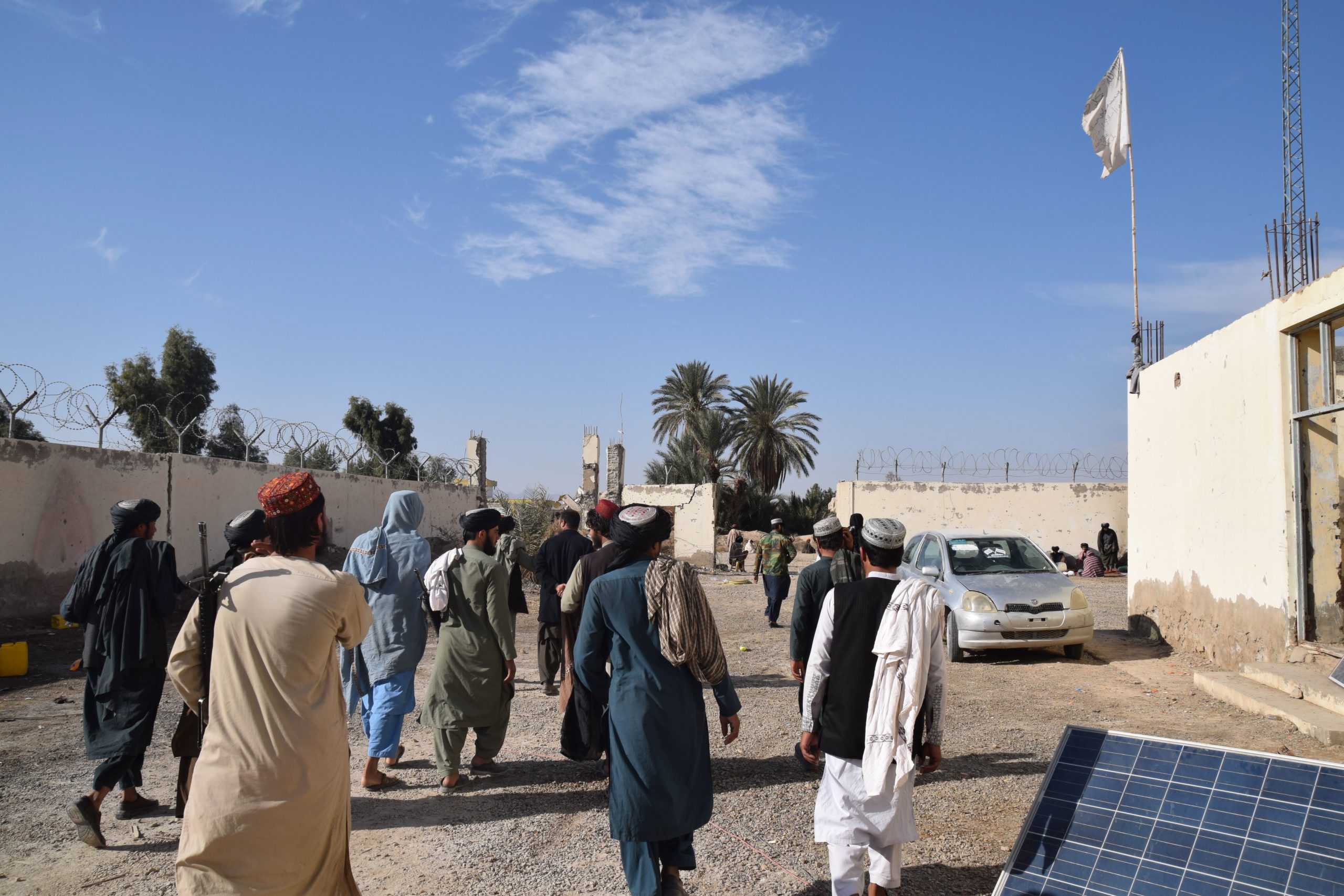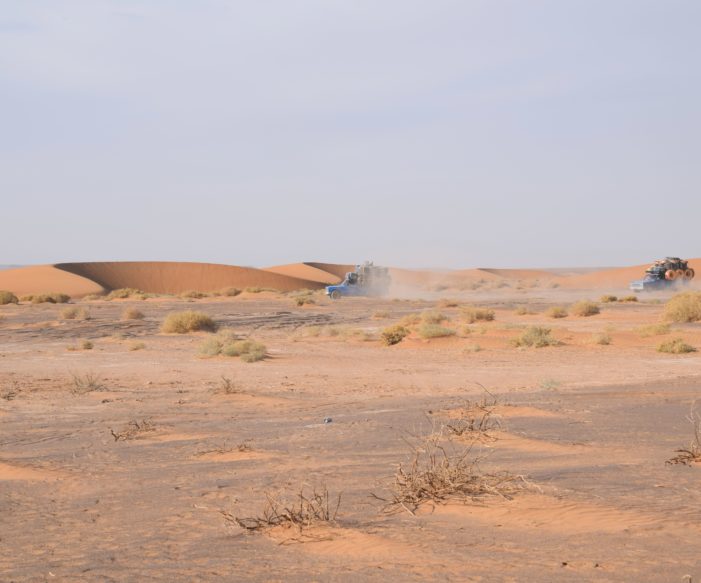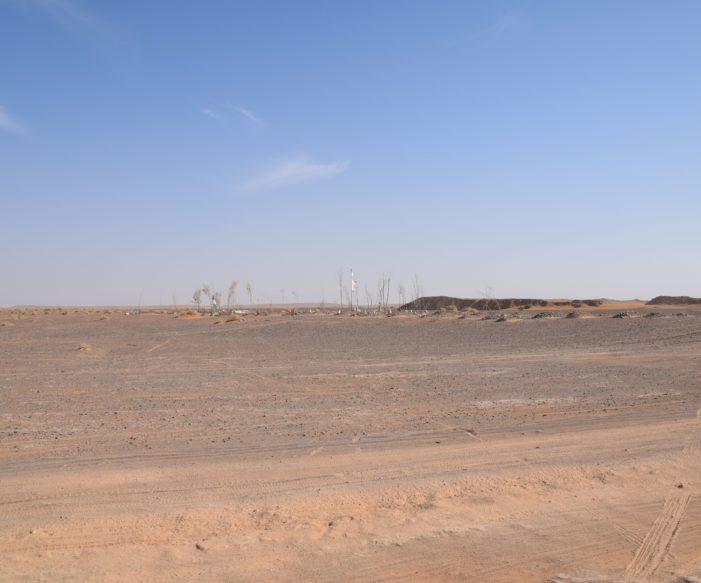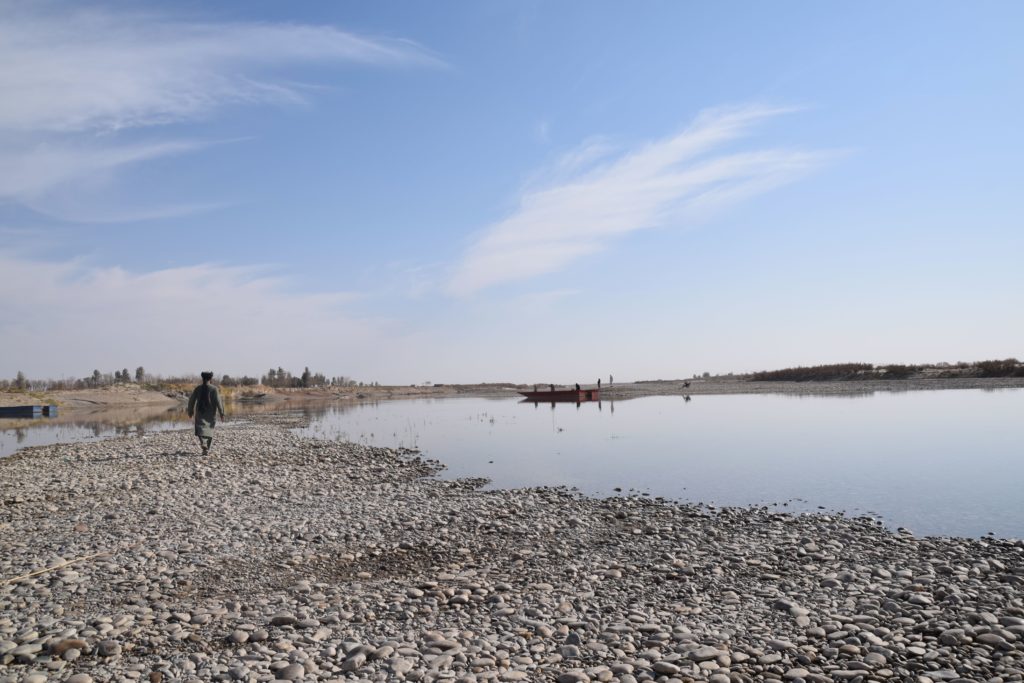In May 2021, the now toppled Afghan Republic asserted to have killed al-Qaida operatives and wounded the Taliban commander hosting them in an airstrike in a remote district in southern Afghanistan. But the targeted Talib and locals tell a different story.
It was late spring, almost the beginning of summer, when Haji Ulfat, a local Taliban commander, dozed in a large room of his compound in Bagat, a place at the edge of the vast desert that covers a good part of the southern Afghan province of Helmand. Haji Ulfat’s compound is — like almost all other buildings in Bagat that are sprinkled amongst fields and withering blades of grass where camels graze — enclosed by a high mud wall and only sports a few simple rooms arranged around a courtyard.
“Shortly after lunch on that day, my two friends, both local Taliban, were shaking me out of my nap,” Ulfat remembered when speaking to me in late December 2021. “‘There are planes in the sky. They are looking for you,’ one of my friends warned me.”
“I did not believe that the planes were a threat,” he continued. “I thought that with the [then] ongoing peace efforts, the time of airstrikes was over and went back to sleep.”
A little later, his companions woke him up again, urging him to leave. “But I still did not feel in danger and remained sitting in the middle of the room,” Ulfat recounted. “That was when the missile hit.”

ALLEGATIONS OF STRIKING AL-QAIDA
On May 24, 2021, the day of the airstrike, the Ministry of Defense of the Afghan Republic that was toppled by the Taliban less than three months later touted it as a success. A press communiqué called it “a targeted operation (…) against members and hideouts of the al-Qaida terrorist network,” adding that 13 members of al-Qaida in the Indian Subcontinent (AQIS) were killed and that the important [Taliban] commander Haji Ulfat hosting them was wounded. AQIS is the regional al-Qaida affiliate in Afghanistan and South Asia that was founded in 2014. Given that Bagat has, according to people who live there, been under Taliban control for years, it is unclear how the Afghan Republic could be so sure about the results of their strike. The now-defunct Afghan military corps in whose area of responsibility the strike took place did not reply to requests for comment sent briefly after the incident had taken place.
Ulfat contested all of this. “The claim of having hit al-Qaida was only a pretense for the bombardment,” he asserted, “there were never any foreign [jihadists] here, not even during the first Taliban Emirate [before the US intervention in autumn 2001 in the wake of the terror attacks of September 11]. And I myself have never had contact with al-Qaida.”
Ulfat’s statements cannot be taken at face value, as he — if the allegations were true — would have a strong motive to deny them. However, other sources and factual circumstances corroborate Ulfat’s account.
“There were no foreign jihadists in Bagat,” an elderly civilian living in Bagat told me about a week after my visit via telephone. And as he openly contested other statements of Ulfat downplaying the magnitude of the current economic crisis in Bagat, there is no indication that he would lie to cover Ulfat. Yet, another civilian man from Bagat also asserted that the claims about al-Qaida in Bagat were untrue, alleging that he and other local men have been wrongly accused of being al-Qaida members. “I have family in Pakistan and call them regularly,” he explains, “then they say I am al-Qaida just because they check telephone records and deem them suspicious.”
I could not independently corroborate that man’s account. However, a detailed investigative report by Connecting Vets based on drone footage and interviews with US servicemembers involved in past airstrikes in Helmand showed that local men in Helmand were swiftly designated as enemy combatants by the US military, sometimes for as little as using a radio and despite being unarmed. As such, the chances of locals being misidentified by American and also Afghan Republican forces were indeed high.

























